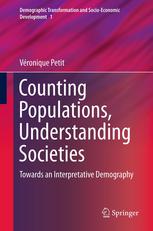

Most ebook files are in PDF format, so you can easily read them using various software such as Foxit Reader or directly on the Google Chrome browser.
Some ebook files are released by publishers in other formats such as .awz, .mobi, .epub, .fb2, etc. You may need to install specific software to read these formats on mobile/PC, such as Calibre.
Please read the tutorial at this link: https://ebookbell.com/faq
We offer FREE conversion to the popular formats you request; however, this may take some time. Therefore, right after payment, please email us, and we will try to provide the service as quickly as possible.
For some exceptional file formats or broken links (if any), please refrain from opening any disputes. Instead, email us first, and we will try to assist within a maximum of 6 hours.
EbookBell Team

4.8
74 reviewsThe core aim of this book is to determine how anthropology and demography can be used in conjunction in the field of population and development.
The boundaries of demography are not as clearly defined or as stable as one might think, especially in view of the tension between a formal demography centered on the ‘core of procedures and references’ and a more open form of demography, generally referred to as Population Studies.
Many rapprochements, missed opportunities and isolated attempts marked the disciplinary history of anthropology and demography, both disciplines being founded on distinct and highly differentiated traditions and practices. Moreover, the role and the place assigned to epistemology differ significantly in ethnology and demography. Yet, anthropology and demography provide complementary models and research instruments and this book shows that neither discipline can afford to overlook their respective contributions.
Based on research conducted in West Africa over more than twenty years, it is a defense of field demography that makes case for a continuum ranging from the initial conception of fieldwork and research to its effective implementation and to data analysis. Changes in behaviors relating to fertility, poverty or migration cannot be interpreted without invoking the cultural factor at some stage. Representations in their collective and individual dimensions also fit into the extended explanatory space of demography.